规整中的非规整—北京常楹公元商务中心景观设计
R-land北京源树景观规划设计事务所

1 平面图The master plan
此项目由 2 座 23 层商务中心与南侧 2 座29 层公寓楼外墙围合成不到 2hm2的小场地,2座商务中心的东南侧由一座 3 层的连体建筑构成。主要户外活动空间集中在地块的西北部,整个场地被地下出入口、道路、停车位分隔出零散的多处边角地块。如何处理好这些死角空间成为设计成败的最重要的关键点。
根据设计环线道路的走向,用垂直于此方向的铺装及线形种植带将分散的边角场所统一在全区整体的装饰风格中。错落的树池林带和点缀在铺装广场中的绿岛,组合成大小变化的场地形式,营造出“停留”与“通过”2 种异质空间的有机共存。并将地上设备间与停车场进行适当地遮挡,力求规避展示空间的可视范围。
椭圆形隆起状的种植岛,尝试有限中的体感增值;成品的 50cm×50cm 的正方形树脂发光座椅,具备城市家具的使用与展示的双重功能;高出挡板 50cm 的圆筒状树池,适度地强调白蜡存在的同时界定了略显粗野的狼尾草等地被植栽;绿岛上丛生元宝枫与三四种地被植物的自然结合,规整中的自由组合;无序渐变的广场铺装,传达着场地整体的设计风格与氛围;林下序列状分布的绿带,在丰富了地表的排列形式的同时缓解了硬质铺装的过度之感;利用铺装带的间隔空间,调整过于自由的穿行动线;非常规的弧形挡墙,反衬种植岛的存在;5m间隔的分隔带铺装及种植槽,整合了分布凌乱的边角空间。
在这里,限定与自由,统一与零散,有序与无序,行列与错落,等比与散置均表达了这样一种设计语言—规整中的非规整。
项目名称:规整中的非规整—常楹公元商务中心景观设计
项目位置:北京市朝阳区管庄北二里
项目面积:1.9hm2
委托单位:北京信远筑诚房地产开发有限公司
设计单位:R-land北京源树景观规划设计事务所
方案设计:章俊华、杨珂
扩初+施工设计:章俊华、白祖华、胡海波、杨珂、程涛、陈一心、邸杰、陈佳运
专项设计:马爱武(结构)、杨春明(电气)、肖尧(建筑)、田珊(给排水)
施工单位:北京林业大学林业科技有限公司、北京市政三建设工程有限责任公司
设计时间:2014年11月—2015年3月
完成时间:2016年10月
英文校译:琳赛·洛特,苏畅
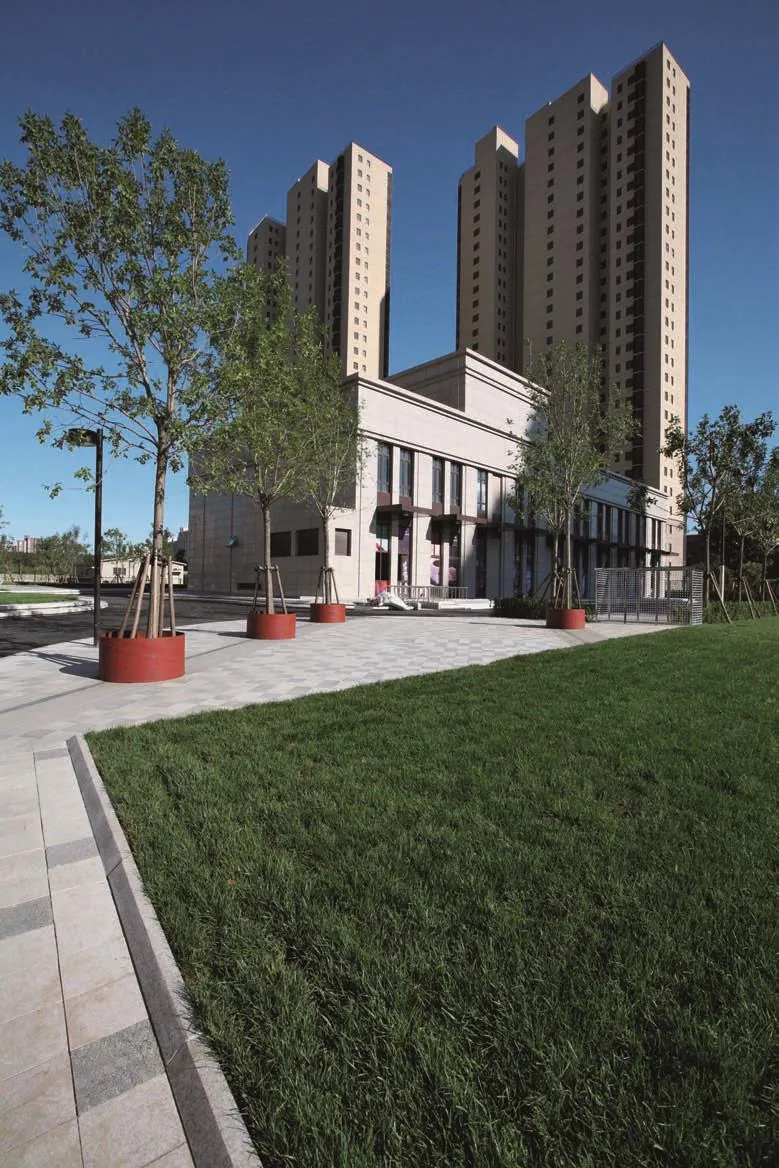
2 铺装,种植筒与草坪Pavement, planting barrel and lawn
Project:Regularity in Irregularity — Landscape Architectural Design in Chang Ying Gong Yuan Business Centre
Area:1.9hm2
Location:Guanzhuang Erli, Chaoyang District, Beijing
Client:Beijing Xin Yuan Zhu Cheng Real Estate Development Co., Ltd.
Design department:R-land Yuanshu Institute of Landscape Planning and Design, Beijing.
Schematic Design Phase:ZHANG Junhua, YANG Ke
Design Development and Construction Document Phase:ZHANG Junhua, BAI Zuhua, HU Haibo,YANG Ke, CHENG Tao, CHEN Yixin, DI Jie, CHEN Jiayun
Structural Engineering/Electricity/Architecture/Water Supply:MA Aiwu, YANG Chunming, XIAO Yao, TIAN Shan
Construction department:Beijing Forestry University Forestry Technology Co.,Ltd., Beijing Third Municipal Construction Engineering Co., Ltd.
Date of design:2014.11—2015.3
Date of completion:2016.10
Translating and Proofreading:Lindsay Rutter, SU Chang
This project is located on a 2 hectare site which is surrounded to the south by an exterior wall of 23 storey business centres and in the southeast by 29 storey apartment complexes. A 3 storey building which is connected completes the southeast section of the commercial centres.
Most of the important outdoor activity is located in the northwest area of the site which consists of numerous scattered areas separated by underground garage entrances, roads and parking lots. Doing this and finding the best ways of utilising these scattered areas became the most important key element in the whole design.
According to the direction of the circular route, pavement and planting lines radiate vertically from the line of the road and are integrated into a uniform decorative shape over the whole area. Scattered belts of trees and islands of green embellish the square form of the paving in a changing manner creating a multiple organic harmonious coexistence of spatial heterogeneity with both dynamic and static states. Warehouses for equipment and parking lots have been appropriately covered to avoid detracting from the visual aspect of the display area.

3 夕阳下的中心广场Central plaza in sunset

4 动与静的领域划分The field division of dynamic and static state

5 建筑与铺装的邻接处理Design method of adjacent space in architecture and pavement
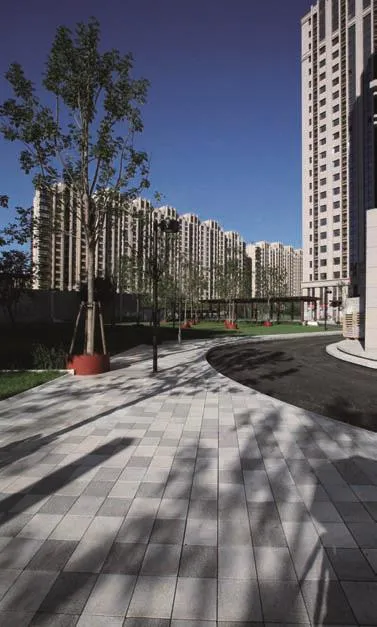
6 外缘绿地的边角处理Design method of edge in outer green space
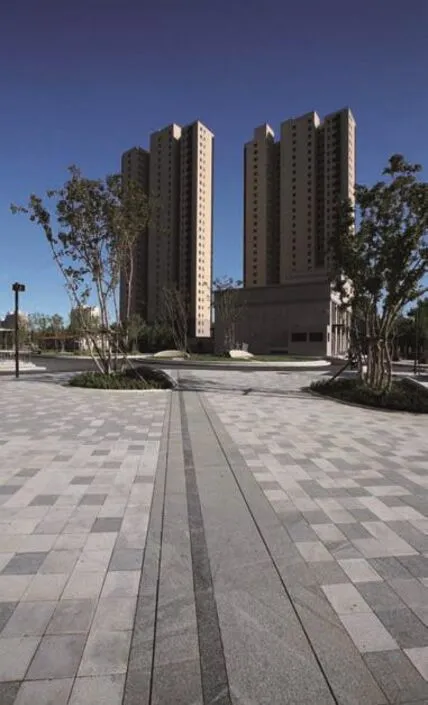
7 铺装纹理的处理Design method of pavement texture
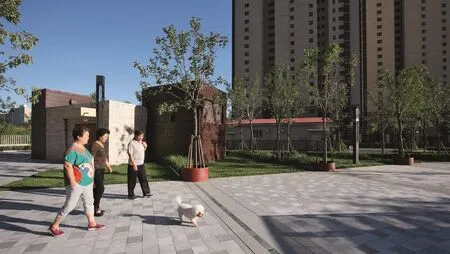
8 日常利用的广场空间Daily use of the plaza space

9 种植与铺装形式Form of planting and pavement
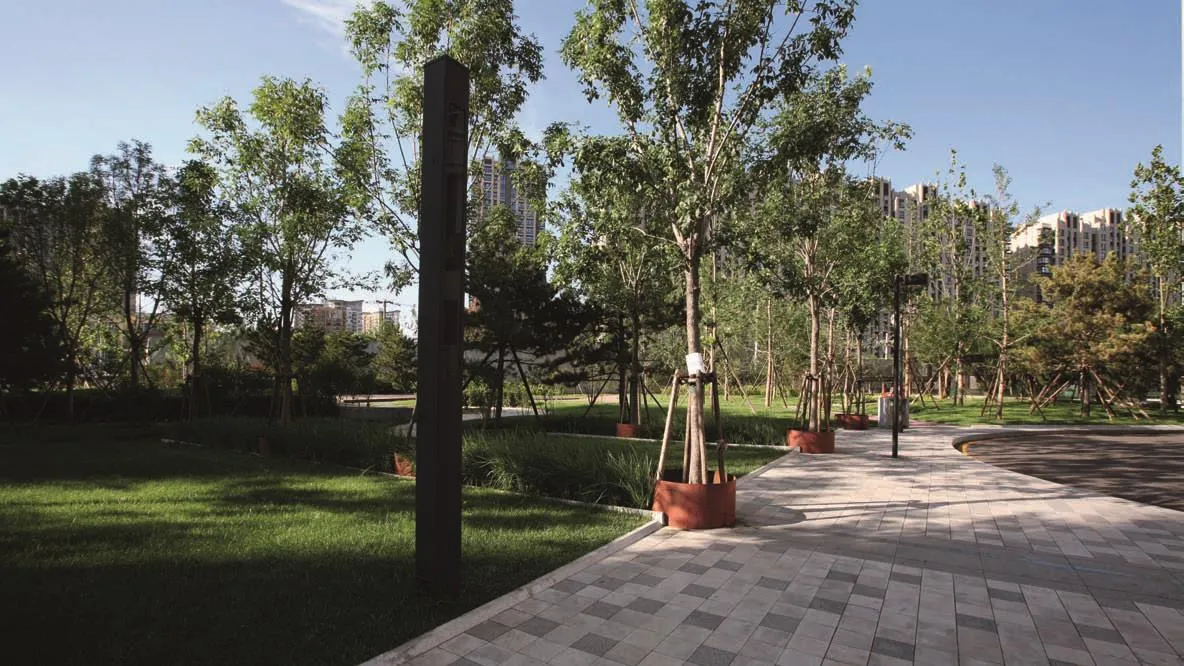
10 周边绿地的结合The combination of surrounding green space

